This article was co-authored by Anthony Stark, EMR. Anthony Stark is a certified EMR (Emergency Medical Responder) in British Columbia, Canada. With over 11 years of experience, he has worked as an industrial medic and provided urban and rural paramedic services. He currently works for Mountain View Safety Services and previously worked for the British Columbia Ambulance Service. Anthony has a Bachelor of Engineering in Electrical, Electronics, and Communications Engineering from the Georgia Institute of Technology. He has completed the EMP Canada EMT Course and Swiftwater Awareness Training associated with the British Columbia Ambulance Service.
There are 12 references cited in this article, which can be found at the bottom of the page.
wikiHow marks an article as reader-approved once it receives enough positive feedback. In this case, 93% of readers who voted found the article helpful, earning it our reader-approved status.
This article has been viewed 93,796 times.
A stroke occurs when part of the brain doesn’t get enough blood. When this occurs the cells don’t get oxygen or nutrients and they die. The best way to prevent a stroke is to live a healthy lifestyle and manage any other medical conditions you might have that may increase your risks. If you or someone you are with may be experiencing a stroke, call emergency responders immediately.[1]
Steps
Reducing your Risk with a Healthy Lifestyle
-
1Eat a healthy diet. A healthy diet will help you reduce your risks of obesity, high cholesterol, high blood pressure, and diabetes. Each of those conditions raises your risk of having a stroke. To lower the risks of developing these conditions you can:[2]
- Reduce your salt intake. This will lower your risk of developing high blood pressure. You can reduce your salt consumption by not sprinkling table salt onto your food, not salting pasta or rice water, and purchasing canned foods that say low sodium. Check the ingredients in processed foods. Many have a high salt content.
- Eat a low fat diet. A fatty diet increases your risk of clogged arteries. You can easily eat less fat by choosing lean meats like poultry and fish and trimming the fat off of red meats. Drink low fat milk or skim milk instead of whole milk. Eat eggs sparingly because they are high in cholesterol. Check foods labeled “diet” or low fat- they can surprise you with sodium and fat content!
- Control your caloric intake. Eating a high calorie diet places you at a higher risk for diabetes and obesity unless you are extremely physically active. Limit your intake of highly sugary foods like candies, cookies, and pastries. The processed sugar provides calories without the nutrients that will make you feel full. This can make you prone to overeating.
- Increase the fruits, vegetables, and whole-grains that you eat. These foods are generally low fat and high in nutrients. They will supply you with the energy that you need without excess fat and calories.
-
2Exercise. Exercise an excellent way to reduce your risks for strokes, diabetes, heart disease and obesity. The Centers for Disease Control and Prevention and the National Stroke Association make the following recommendations:[3]
- 150 minutes per week of moderate physical activity. Moderate physical activity includes things like power walking, biking, or doing water aerobics. This should be in addition to two days per week of weight training.
- 75 minutes per week of intense physical activity. These activities cause you to work harder than the moderate activities. Examples include jogging, sprinting, swimming laps, and biking up hill. This should also be paired with weight training twice per week.
- Do three 10 minute periods of exercise per day if you do not have the time for more. This may include walking to work, walking during your lunch break, and walking home from work. The exercise doesn’t have to be done all at the same time. Bring a friend with you to make it more enjoyable.
Advertisement -
3Quit smoking. Smokers’ risks for strokes are twice as high as those of nonsmokers. Smoking promotes clotting, makes your blood thicker, and hardens your arteries. If you smoke and are having trouble quitting, there are many resources available to you. You can:[4]
- Talk to your doctor
- Get support from family and friends
- Call a hotline when you are feeling the urge to smoke
- Avoid places where you usually smoke
- Talk to a counselor
- Try medications or nicotine replacement therapy
- Go to residential treatment
-
4Control your alcohol intake. Excessive drinking can raise your blood pressure and your risk of a stroke. If you drink, stay within the recommended limits:[5]
- One drink per day for women and one to two drinks per day for men.
- A drink is 12 ounces of beer, a glass of wine (5 ounces), or one and half ounces of liquor.
-
5Manage any medical conditions you may have. Some medical conditions increase your risk of having a stroke. If you have one of these conditions, talk to your doctor about how to best treat it and minimize your risk of having a stroke.[6]
- High blood pressure. High blood pressure is also called hypertension. It makes you one and a half times more likely to have a stroke. If you have high blood pressure talk to your doctor about what the best way to control it would be. Your doctor may suggest dietary changes, exercise, or medication.[7]
- Atrial fibrillation (AFIB). This kind of irregular heartbeat is most likely to occur in seniors or with people who have heart disease, high blood pressure or diabetes. Because of the irregular heartbeat, your blood pools in your heart. This makes it prone to clotting. If you have this condition, your doctor may suggest treatment with anticoagulant medications or electrical stimulation.[8]
- High cholesterol and fatty deposits in your arteries (atherosclerosis). Cholesterol is a waxy, fatty material in your blood. If you have too much it can clog your arteries and cause a heart attack or stroke. If you have high cholesterol, your doctor will likely suggest that you reduce it through dietary changes, exercise, and possibly medication.[9]
- Diabetes. There are two major types of diabetes: Type 1 where your body doesn’t make sufficient insulin and Type 2 where your body doesn’t react properly to your insulin. People with diabetes often also have high blood pressure, high cholesterol, atrial fibrillation, and difficulty controlling their weight. Your doctor may suggest that you lower your risk of a stroke by making dietary changes, taking medications, exercising, or taking insulin.[10]
- Carotid artery disease. This occurs when the carotid arteries get narrower. Because these vessels provide blood to your brain, this makes you more vulnerable to blockages and strokes. Your doctor will probably suggest testing your for this if you have symptoms of a stroke or significant risk factors.[11]
Recognizing the Symptoms
-
1Identify the symptoms of a stroke. If you are at risk of having a stroke, be aware of what the symptoms are. If you think you might be having stroke, call emergency responders immediately.[12]
- Numbness or weakness in your face, arm, or leg. It may occur on just one side.
- Difficulty speaking or understanding speech.
- Confusion.
- Vision problems. This may occur in both eyes or in just one.
- Difficulty walking, dizziness, and a loss of coordination.
- Headache.
-
2Assess someone you are with if you think they might be having a stroke. The acronym is FAST. It stands for face, arms, speech, and time. Call emergency responders if the person does not pass the following assessment or if you are unsure:[13]
- Face. Evaluate whether the person is able to smile with both sides of their face. If only one side responds, this is a stroke symptom. Have them stick out their tongue and check for deformities such as pulling to one side, severe, unusual dimpling, etc. This can be a sign of stroke.
- Arms. Tell the person to raise both arms. If one arm starts to sink, this is suggestive of a stroke.
- Speech. Have the person repeat a simple sentence. If they slur their words or sound odd, they may be having a stroke.
- Time. If the person has any of these symptoms, they need immediate medical assistance. Call emergency services.
-
3Provide information to the doctor. It is important that the diagnosis be made as fast as possible so that treatment can begin immediately. The doctor will likely do an examination, including possibly a CT or MRI scan to determine if a stroke occurred. Other information that will be useful for the doctor to have includes:[14]
- The person’s medical history
- Medications the person may be on
- Exactly when the symptoms started
Warnings
- If you believe you or a loved one are having a stroke, call emergency services immediately!⧼thumbs_response⧽
References
- ↑ http://www.mayoclinic.org/diseases-conditions/stroke/home/ovc-20117264
- ↑ https://www.health.harvard.edu/womens-health/8-things-you-can-do-to-prevent-a-stroke
- ↑ https://www.cdc.gov/stroke/healthy_living.htm
- ↑ https://www.nhs.uk/conditions/stroke/prevention/
- ↑ https://www.nhs.uk/conditions/stroke/prevention/
- ↑ http://www.nhs.uk/conditions/stroke/Pages/Introduction.aspx
- ↑ https://www.heart.org/en/health-topics/high-blood-pressure/health-threats-from-high-blood-pressure/how-high-blood-pressure-can-lead-to-stroke
- ↑ https://www.mayoclinic.org/diseases-conditions/atrial-fibrillation/in-depth/stroke-risk-atrial-fibrillation/art-20118481
- ↑ https://www.cdc.gov/stroke/conditions.htm
- ↑ https://www.cdc.gov/stroke/conditions.htm
- ↑ https://www.mayoclinic.org/diseases-conditions/carotid-artery-disease/symptoms-causes/syc-20360519
- ↑ https://www.stroke.org/en/about-stroke/stroke-symptoms/learn-more-stroke-warning-signs-and-symptoms
- ↑ https://www.stroke.org/en/about-stroke/stroke-symptoms
- ↑ https://medlineplus.gov/stroke.html
About This Article
To prevent a stroke, eat a healthy diet consisting of fruits, vegetables, and whole grains, while limiting fat and salt intake. Get exercise that involves moderate activity such as walking, as well as intense activity such as swimming laps or jogging. If you smoke or drink to excess, try quitting, as these things increase your risk of stroke. Certain diseases, such as diabetes and high blood pressure, also increase the likelihood you’ll have a stroke, so talk to your doctor about carefully managing these conditions. To learn more from our Emergency Responder co-author, like recognizing common symptoms of a stroke, keep reading!
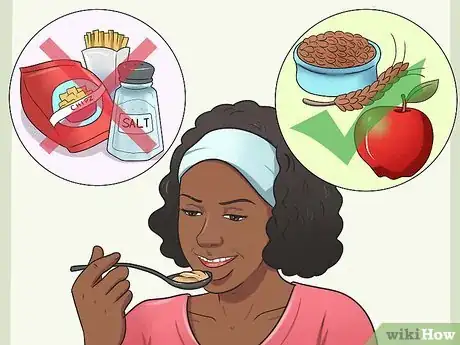

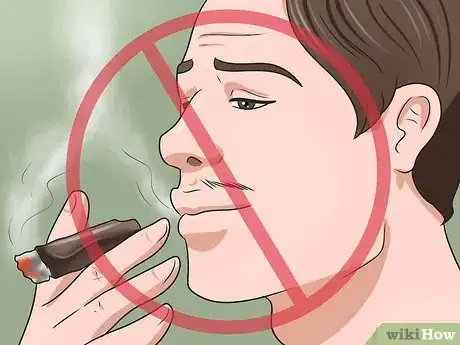
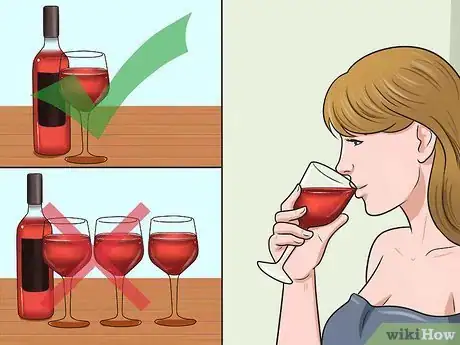

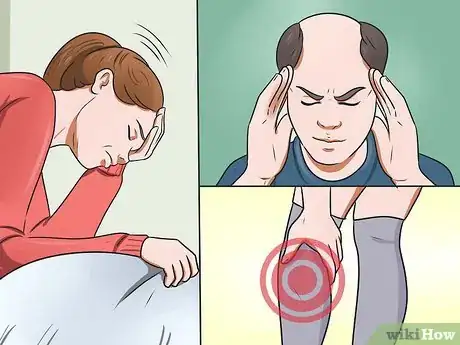



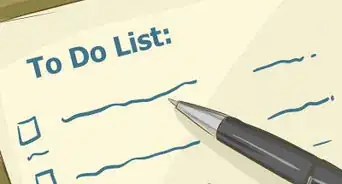



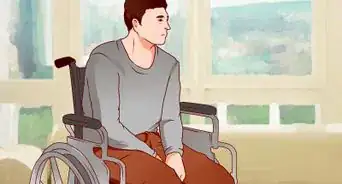



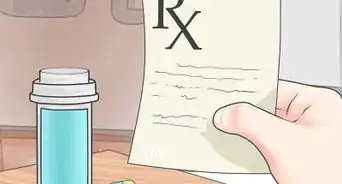











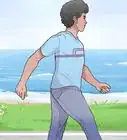
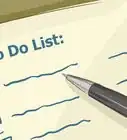





































Medical Disclaimer
The content of this article is not intended to be a substitute for professional medical advice, examination, diagnosis, or treatment. You should always contact your doctor or other qualified healthcare professional before starting, changing, or stopping any kind of health treatment.
Read More...